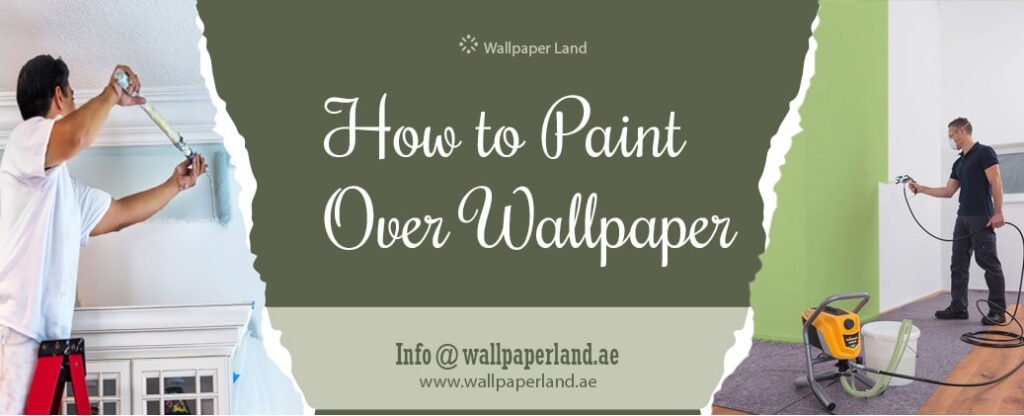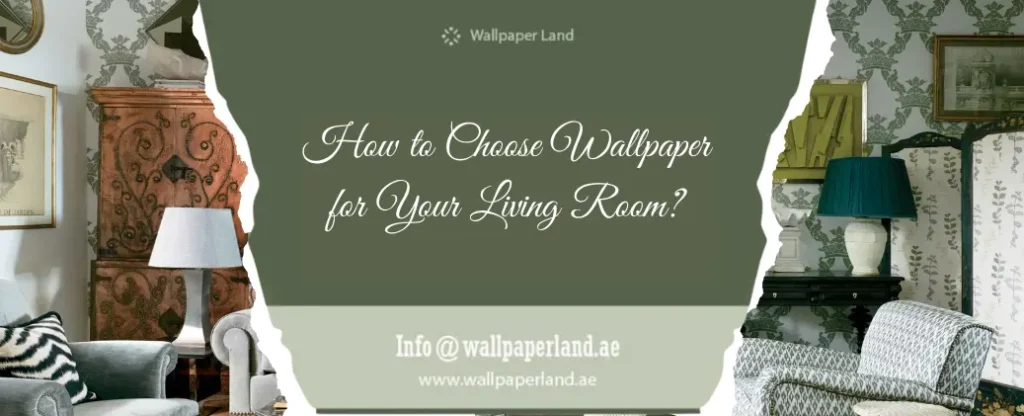How to Paint Over Wallpaper
How to Paint Over Wallpaper
By Wallpaper Land on January 23, 2023

You want to change the look and feel of your space by painting it, but wallpaper treatment can be a challenge, and sometimes you have to remove it first. This year, you’ve made your house as warm as possible by washing and cleaning it thoroughly, installing new curtains, and organising every closet. You’ve added houseplants and done a few outside chores, but there are still some things you need to do, like take care of the wallpaper in your dining room. And Wallpaper Land has got you the most precise information in this regard.
Can You Paint Over the Wallpaper If You’re Tired of Cleaning?
Before picking up a brush, you must evaluate the substance of the previous wallpaper.
- When choosing wall coverings for your home, you should first consider the application method.
- Different sorts of covers will need distinct application methods. For example, paper or vinyl-coated wallpapers may be painted, but proper preparation and priming are essential. Wallpaper seams and edges may begin to separate if sufficient preparation and priming are not performed.
- Unfortunately, many coverings cannot be primed and painted and must be completely removed. For example, thick vinyl backed with fabric should not be painted.
Look Closely at the Cracks
- First, ensure that the seams firmly adhere to the wall.
- Use wallpaper adhesive to fix it if it is lifting in any area.
- Primer and paint might seep beneath and make the margins seem much worse if you don’t see the cracks before painting.
- Utilize a rag or duster to remove surface debris from the wall.
- Do not wash it since water may soak the wallpaper and reactivate the adhesive, causing the paper to peel off.
Wash the walls
- A slightly damp towel can clean the walls of dust and filth.
- Primers might perform better at adhering to a dusty surface. For example, in a frequently used kitchen, the walls are likely to get greasy and dusty, requiring cleaning using a diluted version of the best commercial cleaner available.
- Avoid soaking the walls with water or a solution to keep your wallpaper from peeling or bubbling.
- Let the wall dry for some time so that your hard work does not get wrecked.
Read More: Main Types of Wallpapers
Look for Damage
To ensure the success of your final product, it is important to ensure your wall coverings are in excellent condition. The wall covering must be clean and free of any evidence of lifting at the borders or seams. If some tears or seams are peeling, it would be best to remove the paper before painting; otherwise, the paint may peel or accentuate the flaws in the underlying coverage.
Perform Preparatory Work
Use painter’s tape to tape off the ceiling, molding, and baseboards, not regular masking tape, which can pull up the paint.
Using an angled brush, begin at the ceiling, then roll the remainder of the wall in a “W” pattern, crisscrossing to cover the whole surface. If you go up and down, you will leave fresh lines as the paint builds up on the roller.
Read More: Wallpaper Trends 2025
Invest in the proper equipment.
- Open windows and air the area since oil-based paint is, to put it bluntly, rather pungent. Protect yourself from fumes by using a face mask, and have sensitive individuals, such as those with asthma, leave during the process; the odour will subside within 24 hours.
- Use an oil-specific brush, which will have more bristles to grasp the paint, and don’t skimp! When used, inexpensive brushes leave stains and bristles on the wall.
- The best way to clean your brushes is using a solvent, such as mineral spirits or paint thinner. Place it in a bucket or pail and spin the brushes in the solvent until the paint has been extracted. Allow them to air-dry and only use them for oil paints in the future.
Prepare the wall
You must apply an oil-based primer when using an oil-based or water-based topcoat, and that’s because a water-based primer might leak into the wallpaper and remove the glue.
- A water-based primer cannot do this.
- Like painting, use a brush to fill the corners and edges, then a roller to complete the large areas.
- Per the manufacturer’s instructions, provide sufficient time for drying.
- Allow the primer to dry overnight for adequate curing, then paint the wall as you would any other wall the following day.
- This time, it is good to use latex paint if desired. However, avoid selecting a fabric with a high shine, such as satin, since it will highlight any faults or texture in the wallpaper.
- Follow the drying periods specified on the paint container, then apply a second coat.
- Retain any remaining paint for future touch-ups by cleaning the can’s rim and securing the lid with a rubber mallet.
- Place it in a cool location where it will not freeze or get too hot.
Read More: Wallpaper vs Paint
Commence painting
- After cleaning, repairing, and priming the wallpaper, paint it as you would any other surface. This is particularly important if the wallpaper has a dramatic design or if you want to paint dark wallpaper with a lighter hue.
- You will likely want two applications, with enough drying time between each.
- It is possible to paint over wallpaper, and it is sometimes preferable to remove it.
- As with many home improvement projects, the quality of the ultimate product relies on the initial work expended. In other words, adequate preparation is everything.
In The End
Painting over wallpaper is a terrific way to refresh walls without removing everything! Our step-by-step instructions will help you to paint and prepare the walls the right way and save yourself a considerable deal of money. Besides, this does bring peace of mind as well and you’re meant to cherish the outcomes, as well.




